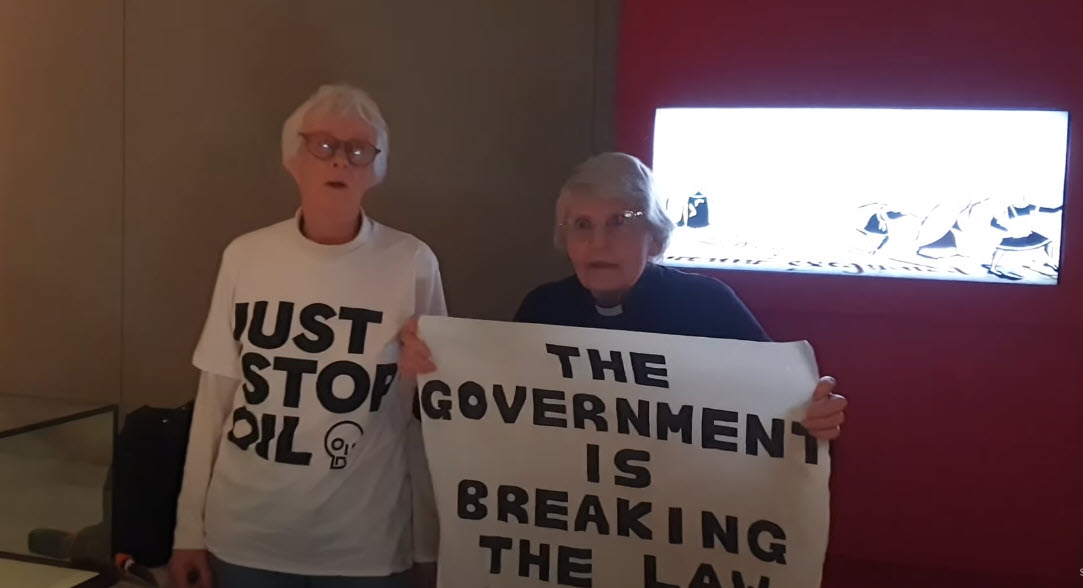In London, in a bold demonstration on Friday morning, two climate activists, both in their 80s, were arrested after shattering the protective glass of the Magna Carta at the British Library. The duo proceeded to glue themselves to the casing that holds this pivotal historical document, sparking immediate action from the library’s security personnel. Despite the dramatic nature of the protest, the British Library has confirmed that the 1215 Magna Carta remains unscathed.
This incident highlights the escalating tactics used by climate activists to draw attention to their cause. The elderly activists are members of a group significantly funded by notable figures including green-energy tycoon and Hollywood filmmaker Adam McKay, known for his work on films such as “Talladega Nights” and “Step Brothers.”
The choice of the Magna Carta, a cornerstone of English constitutional history and a symbol of justice and civil liberties, underscores the protestors’ message about the perceived urgency of their environmental concerns. This act of protest aligns with a growing global movement where activists increasingly target significant cultural artifacts to amplify their message about the climate crisis.
The incident has sparked a debate on the methods employed by climate activists, with discussions centered on the balance between raising awareness and preserving heritage. As climate activism continues to evolve, such actions pose complex questions about the effectiveness and ethical implications of targeting historical artifacts.



